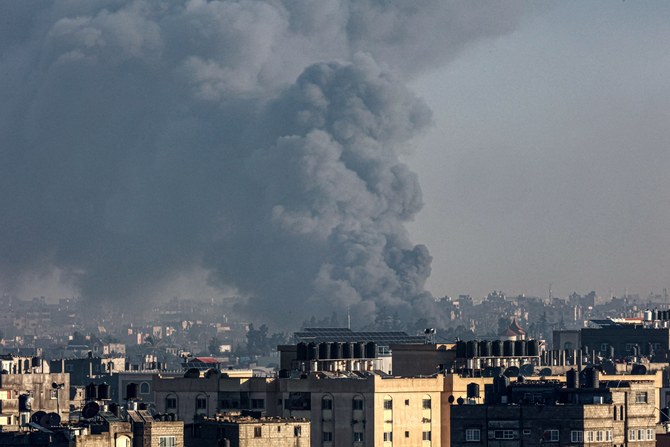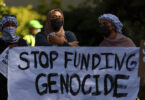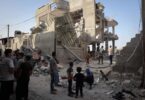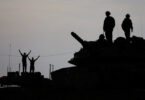Dr. Mohammed Al-Sulami
Operation Al-Aqsa Flood has openly displayed the conflicting interests of stakeholders and brought the region back to the center of attention. Certain observers believe that the outcome of the Gaza dispute will shape the global order, surpassing other current conflicts in Asia or Europe.
Amid the Gaza war and other regional interactions, Iran’s tensions with the US and Israel are escalating. Tel Aviv is exploiting the current volatility to target Iranian proxies, particularly Hezbollah. This is part of Israel’s greater plan to position itself as the dominant economic and political power in the Middle East by reshaping the region. In light of this, Iran is revamping its strategies and approaches to engage and confront its adversaries.
Iran’s approach to the Gaza war is based on three key factors. Firstly, its relationship with Hamas and the so-called Axis of Resistance. Secondly, internal socioeconomic conditions, with Iran aiming to address them through de-escalation and reconciliation with its neighbors, as reflected in last year’s Saudi Arabia-Iran rapport deal. Thirdly, its relations with the US, amid concerns that, if the war continues and expands, Washington will intervene on the side of Israel, ultimately ending the Iranian project. Iran is keen to avoid this scenario.
Iran’s perspective, since the outbreak of the Gaza war, is that the US is aiming to reposition itself as a vital actor in the region in the light of China’s growing engagement through its transnational corridor, diplomacy and partnerships with Gulf states. Iran posits that, in order to achieve this, Washington and its partners last year announced the India-Middle East-Europe Economic Corridor, which Tehran perceives as a threat to its own aspirations to connect East and West, as well as the Global North and Global South, via economic corridors.
Some interpretations suggest that the Oct. 7 attack was an attempt to derail the US project to normalize relations between Israel and the Gulf states. Iran views this project as being dismissive of Palestinian interests and has opposed it since Day 1. Hence, observers argue that Iran, via its proxies – in this case, Hamas – has adopted a more offensive and proactive approach to disrupt the US project, totally altering the understood rules of engagement between the actors.
Regardless of interpretations and which one is more valid than the other, from Israel’s perspective, the prime goal of the Gaza war is to eliminate Hamas. If it is successful, Iran will suffer significantly, as it will lose an important lever it has employed in its regional dispute against the US and Israel. In addition, the elimination of Hamas would open the door to more advanced and aggressive campaigns against other Iranian proxies in Syria and Iraq. With the end of these proxies, Iran’s influence and role in the region would come to an end.
Iran’s forward defense strategy is facing a crisis, with Iranian proxies feeling the heat and Tehran believing that the battle could eventually shift to inside its territories. Typically, Iran blamed the US and Israel for this month’s Kerman incident, in which almost 100 people were killed and more than 200 injured. Thousands had gathered at the tomb of Qassem Soleimani to mark the fourth anniversary of the former Quds Force commander’s killing. In addition, cyberattacks on fuel stations and other critical infrastructure have been showcased by Iran as further evidence of the battle shifting closer to home. Iran is struggling to deal with three key challenges: continual support for its proxies, the consequences of the Gaza war and clear warnings from the US not to expand the conflict. To navigate these challenges, Iran has adopted a strategy that minimizes risks, maximizes gains and considers Arab public opinion.
Through this, it aims to prevent the Gaza war’s ramifications from affecting its domestic stability, avoid direct confrontation with the US or Israel and win the sympathy of the Arab world. For its success, it depends on Iranian proxies sticking to the established rules of engagement. There may be breaches, Iran acknowledges this, and is willing to accept US or Israeli retaliation, even if it is harsh.
This strategy is shaped by Iran’s recognition of its limitations and constraints. It is pursuing a gradual approach of inflicting multiple minor blows on the US and Israel, rather than risking a costly direct confrontation that could risk the Iranian state and its regional ambitions.
The current conflict between Iranian proxies, Israel and the US has entered a new phase. Many key commanders and masterminds of Iranian proxies, such as Razi Mousavi, Saleh Al-Arouri and Abu Taqwa, have all been assassinated in recent weeks. These assassinations and other attacks were conducted quickly, with short time gaps in between, signifying a shift in the US and Israel’s approaches and establishing a new deterrence equation that aims to minimize the chance of broader confrontations, while leaving the door open for US-Iranian dialogue on critical matters.
In light of this new equation, Iran’s responses have been measured, reflecting its limitations. In addition, domestically, the Iranian political currents are divided over whether the country should or should not engage in a multifront regional war. Even Supreme Leader Ali Khamenei issued instructions to commanders, urging them to exercise restraint and avoid direct military confrontation. Russia and China’s preoccupations with other war theaters, as well as US efforts to isolate them in the region, could further narrow Iranian options and responses in the future. If the US is successful in pushing back the Russians and Chinese, Iran will be left stranded, with little support, especially if it entangles itself deeper into the Gaza war or works to expand its scope.
Through analyzing Hassan Nasrallah’s statements, it seems Hezbollah and Iran are coordinating to prevent a large-scale confrontation. The limited conflict in Lebanon-Israeli border areas serves as a sign of Hezbollah’s willingness to engage in negotiations, particularly concerning border demarcation and issues that have remained unresolved since 2006.
By analyzing Iran’s strategic mindset and reviewing the previous actions taken by Tehran under similar circumstances, it becomes apparent that the conditions for confrontation between it and Israel are currently unfavorable. The qualitative recent Israeli operations have predominantly targeted the support provided by Iran to Hamas via its proxies. These operations are not aimed at directly striking the Iranian project, nor do they target Hezbollah’s top leadership or military committees – which are positioned far away from the targeted areas – despite Israel’s capability to do so.
The current situation indicates that the region will undergo significant changes following the Gaza war. The previous balances established in the past decade are no longer in place and the Iranian regime faces an existential threat if it continues to impede the US-Israeli project. Despite this bleak outlook for the regime, it still possesses various levers it could employ to stay afloat. These include closing the Strait of Hormuz and targeting strategic sea routes, with the Red Sea crisis being an example of this. It could also advance its nuclear program to establish a deterrent force against major threats, attack oil tankers to impact global oil prices or expand the scope of the confrontation in the Middle East by targeting Israeli interests both within and outside the Occupied Territories. Another option would be to activate Iranian cells in Europe and worldwide to destabilize global security and stability.
To conclude, given the Gaza war, its consequences and Iran’s adaptation of its approaches and strategies to deal with new challenges, the most likely scenario is for Israel to generalize the model of the 2006 war and its aftermath, such that the cost of the war deters Hamas and other Iranian proxies from attacking it again. However, this Israeli aim is not in contradiction with Iran’s overarching ambitions, as its proxies will continue to carry out their operations and roles across the region in line with Tehran’s objectives.







